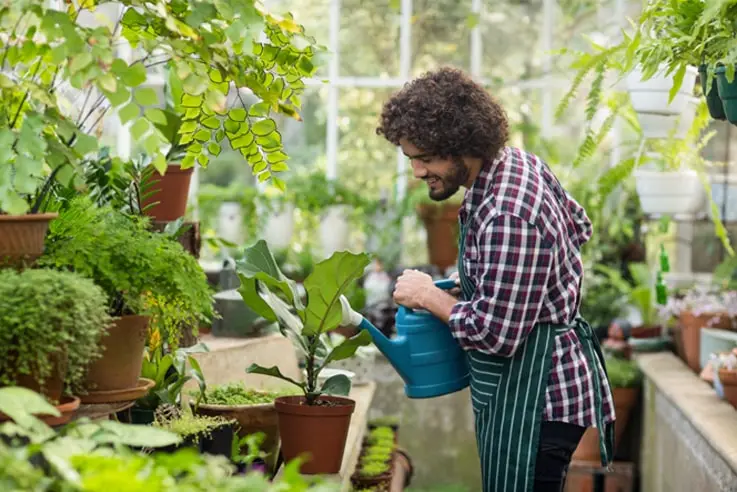Disclaimer: What Liberty Ate. This site provides food and drink content for informational purposes only.
Gardening is difficult to impossible at high altitudes. Extended winters and constantly cold temperatures can be tough on all but the hardiest of plants. Even if you use a greenhouse, one small accident can leave your crops hopelessly exposed to the elements. Altitude problems require modern solutions, particularly ones that are out of this world.
Altitude Problems
Cold is the most obvious problem growers face at high altitudes. Dropping temperatures and long winters can limit your choice of crops. Traditional greenhouses can offer a modicum of protection from extreme temperatures.
However, the golf-sized hail that hit Utah in 2020 left most of them damaged. Aside from the cold, higher altitude also brings about higher concentrations of ultraviolet (UV) radiation. Every 1,000 feet of elevation corresponds to a 6 to 8 percent increase in UV concentrations. That’s a whopping 42 to 56 percent higher concentration of UV in Park City, Utah.
While more sun should be better for plants, too much UV impairs most plants’ ability to absorb sunlight. Overexposure to UV often leads to stunted growth, reduced productivity (number of fruits, flowers, etc.), and drops in quality. Thinner and drier air can also affect plants negatively. The arid air in high altitude places often leaves plants dehydrated and more vulnerable to damage and disease.
Greenhouses Meant for Mars
Tesla’s Elon Musk and NASA agree that if there are any greenhouses on the moon or Mars, they would be geodesic domes. If geodesic greenhouses or can withstand the rigors of space or another planet, elevation shouldn’t be a problem. The dome-like structure of geodesic greenhouses ensures optimum strength and stability. Stress is distributed throughout the structure, ensuring your greenhouse won’t buckle to heavy snow. Its curved surface also allows the wind to pass through, preventing the build-up of snow or undue wind pressure.
Curved surfaces also absorb sunlight more efficiently. You won’t need to build your greenhouse at an optimum angle since every angle (or lack of it) will be the optimum one. Most geodomes use polycarbonate sheets instead of glass. Polycarbonate sheets are easier to install, especially with the multiple modules needed for a geodesic greenhouse. Sunlight is dispersed as it passes through the panels, ensuring even distribution within your greenhouse. Your crops will appear more uniform and appearance, making them easier to sell and giving you the appearance of a professional grower or farmer.
Polycarbonate sheets also filter UV radiation, ensuring your crops make full use of the sun. Combining polycarbonate sheets with a geodesic greenhouse also ensures optimum heat absorption and retention. You can extend your growing season or opt for plants that might be more sensitive to the cold.
Of course, geodesic greenhouses can be quite flashy. Building one will certainly attract attention, but a decent landscaper should be able to make your alien-like greenhouse blend with (or become the highlight of) your garden.
Choosing Your Crops

For your first batch of crops, opt for more hardy root crops like beets, carrots, parsnips, or radishes. You might need to use a raised bed if you plan on growing through winter. Leafy greens are also a great option for an aspiring grower. They take two to three months to grow, and you can immediately make a salad out of them. Broccoli and cauliflower are also good options, as they can thrive on cold temperatures.
Of course, if you are fairly confident of your growing skills, you can take on more difficult and more lucrative crops. A greenhouse protects your crops from the harsh effects of the environment and weather, so you should be able to grow even the most heat-loving crops like peppers and melons.
Make Adjustments
Add moisture into the air by leaving a container of water or two inside your greenhouse. A drum should do nicely, but even a pail of water would be enough to alleviate the dryness of the air. Opt for plastic containers, as wood can become breeding grounds for harmful fungi. Make sure to change the water regularly. You don’t want mosquitoes and other insect larvae in your water containers. Geodesic greenhouses are very efficient in absorbing heat, so much so that you’ll need to add a few shades during the summer to keep things cool. If shades aren’t enough, you may need to vent the heat by opening a few panels to let cool air in.
If geodesic dome greenhouses are fit for the moon and Mars, they will certainly work at high elevation. The most modern greenhouses can absorb sunlight while filtering UV retain heat better than their traditional glass counterparts and stand up to extreme weather and temperature. Growing in high elevations might be difficult, but using a greenhouse meant for space can make things easier.

